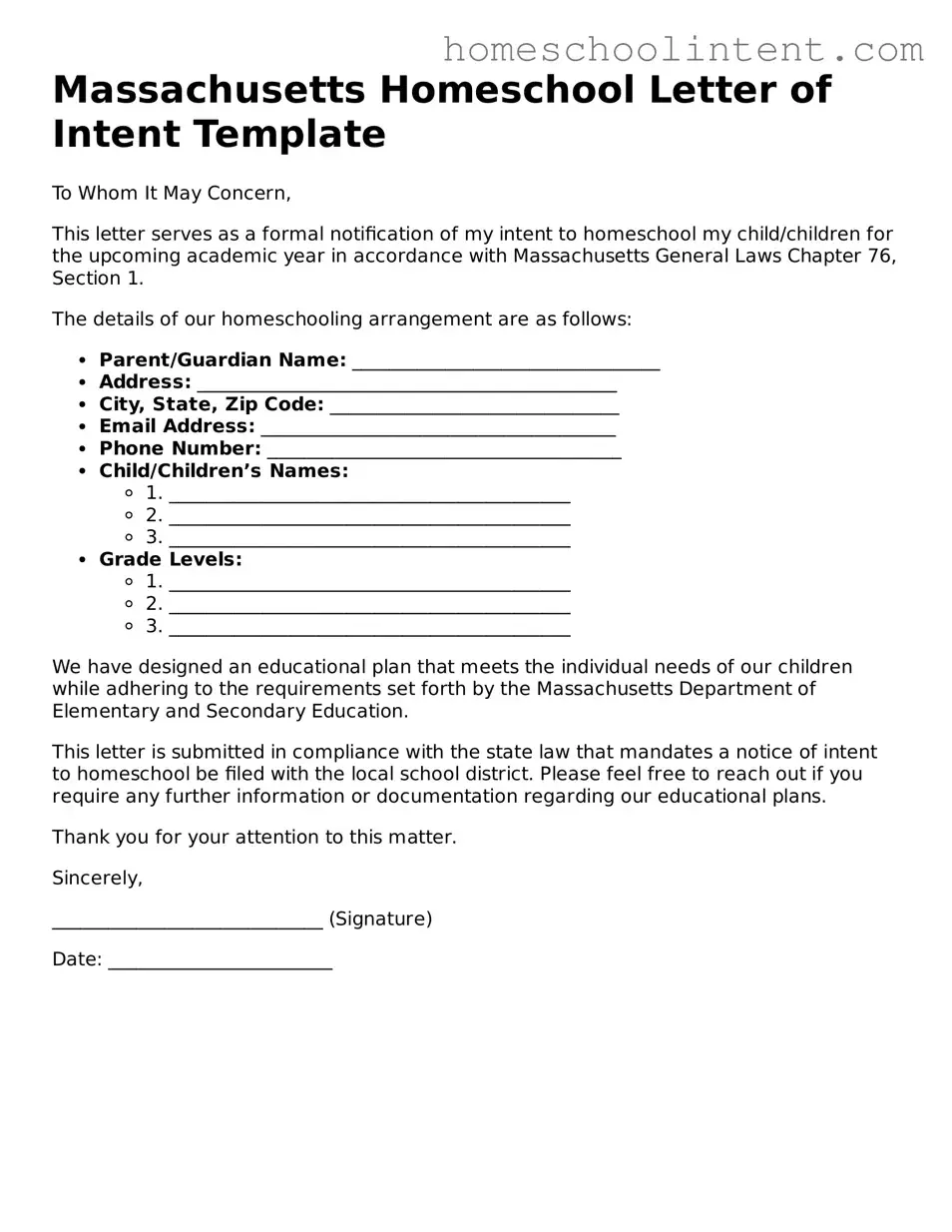Documents used along the form
When families decide to homeschool in Massachusetts, they often need to submit additional documents alongside the Homeschool Letter of Intent. These forms help ensure compliance with state regulations and provide a clear outline of the educational plan. Below is a list of commonly used documents that complement the Homeschool Letter of Intent.
- Educational Plan: This document outlines the curriculum and educational goals for the student. It details the subjects to be taught and the methods of instruction that will be used throughout the year.
- Attendance Record: Keeping track of daily attendance is important. This record provides a log of the days and hours the student engages in educational activities, demonstrating adherence to educational requirements.
- Progress Reports: These reports summarize the student’s academic progress over time. They can include grades, assessments, and descriptions of completed projects or assignments.
- Standardized Test Results: If applicable, families may include results from standardized tests. These scores can help assess the student’s academic performance compared to peers.
- Portfolio of Work: A collection of the student’s work, including assignments, projects, and tests, showcases their learning journey. This portfolio can serve as evidence of the educational progress made throughout the year.
- Special Needs Documentation: For students with disabilities, relevant documentation may be required to outline any accommodations or modifications necessary for their education.
- Withdrawal Letter: If the student was previously enrolled in a public or private school, a withdrawal letter may be needed. This letter formally notifies the school of the student’s transition to homeschooling.
- Curriculum Resources: A list of educational materials and resources that will be used throughout the homeschooling year can provide insight into the chosen curriculum and teaching methods.
Gathering these documents can help create a comprehensive homeschooling plan that meets state requirements and supports the student’s educational journey. By being organized and thorough, families can ensure a smooth transition to homeschooling while fostering a positive learning environment.
